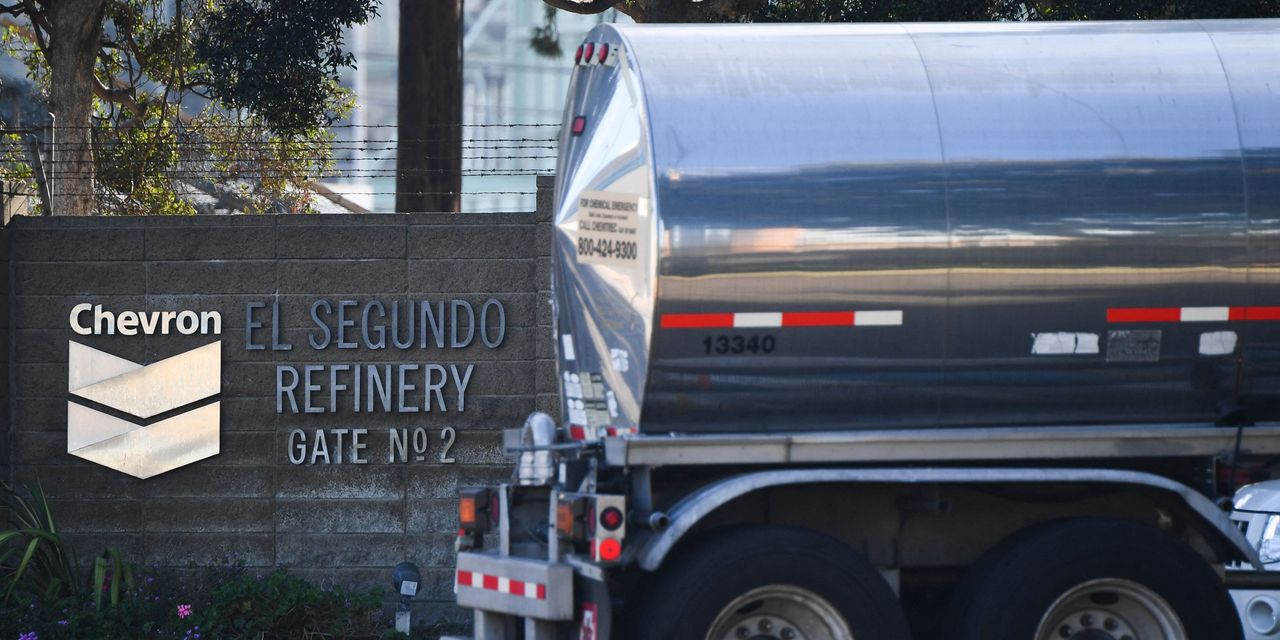
Chevron CVX -3.52% was off to a great start in 2022, but investors suddenly see its barrel as only half full.
The company started the year off with a bang, with its shares touching a record high on Thursday after it announced a 6% hike to its dividend, which is more generous than the 4% analysts had expected. Rival Exxon XOM 0.21% Mobil kept its payout unchanged on the same day but is expected to raise it later.
But Chevron’s shares dropped sharply after full-year results were unveiled Friday morning. Despite reporting its best year of earnings since 2014, when oil prices were $100 a barrel on average, Chevron’s numbers weren’t quite strong enough to sustain the excitement.
The company announced Friday that it generated $29.2 billion worth of cash flow from operations in 2021, almost three times what it did in the bruising year that was 2020. It was nevertheless about $2 billion short of what analysts polled by Visible Alpha had expected. Chevron typically maximizes cash generation during good years: In 2018, when oil prices were—on an annual basis—similar to 2021, the company generated more than $30 billion of cash flow from operations. Still, with capital expenditures lower than where they were in 2018, Chevron managed to squeeze out its highest-ever quarter of free cash flow.
Most of the disappointment seems to have had rather boring administrative roots, not fundamental causes. On an earnings call on Friday, Chevron executives chalked the lower-than-expected cash flow to slow federal tax refunds and some international contracts where additional taxes kick in when oil and liquefied-natural-gas prices surge. Additionally, those higher LNG prices in the fourth quarter were something of a mixed bag: Chevron didn’t quite get to benefit from all the price upside because more customers opted to take delivery through contracts, making fewer cargoes available for spot sales.
Chevron should be a reliable cash gusher the rest of the year as long as oil prices hold up to expectations; some on Wall Street are calling for them to reach $100 a barrel by the summer. Chevron tends to be more upstream-weighted than its peers and, within that, more oil-weighted, which means higher crude prices should juice its returns more.
But bullish oil forecasts can’t always be trusted, so what will really set companies apart this year is their ability to return cash to shareholders, no matter what the oil price. In 2021, Chevron reinvested roughly 28% of its operating cash flow back into its business, devoting another 40% to dividends and buybacks. That is quite the switch from historical norms, when it almost always overspent on capital expenditures compared with shareholder returns. Based on Friday’s guidance, the company is slated to return more than 42% of operating cash flow to shareholders this year and could do even better since it has the strongest balance sheet among peers.
Despite trading near historic highs, Chevron’s shares remain cheap. Its enterprise value as a multiple of earnings before interest, taxes, depreciation and amortization is about 6% below that of rival Exxon. That gives it plenty of fuel for the road ahead.
Write to Jinjoo Lee at [email protected]
Copyright ©2022 Dow Jones & Company, Inc. All Rights Reserved. 87990cbe856818d5eddac44c7b1cdeb8
Appeared in the January 29, 2022, print edition as ‘Chevron Still Has Plenty of Gas in Its Tank.’








